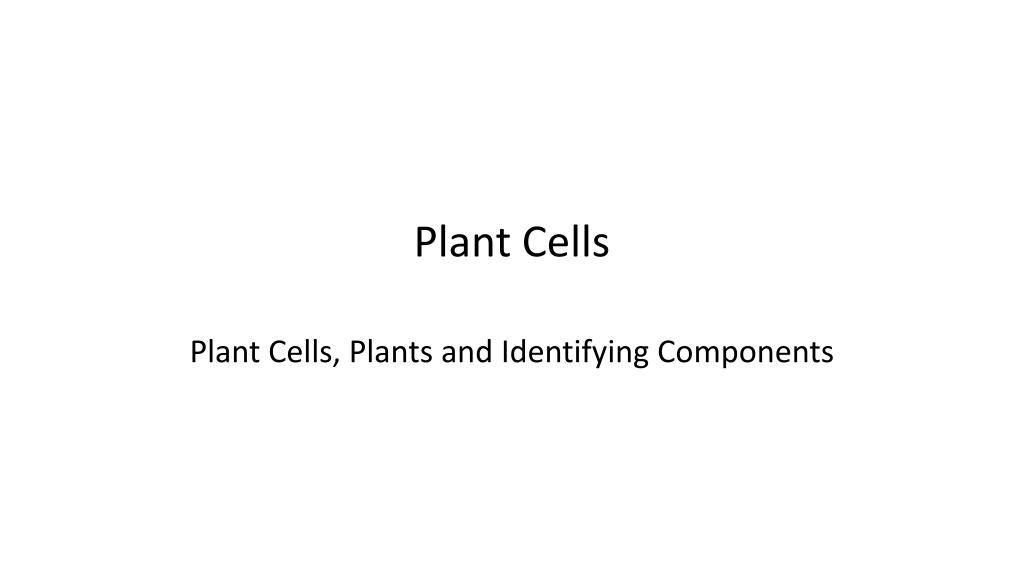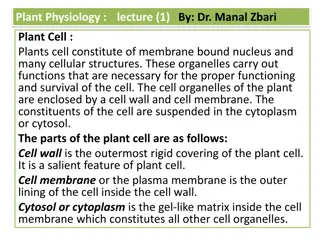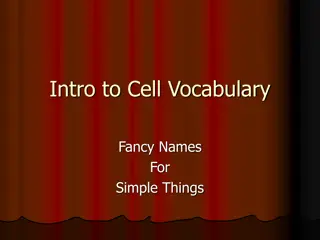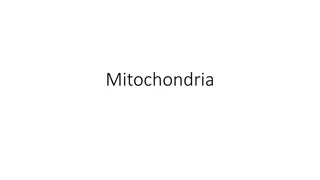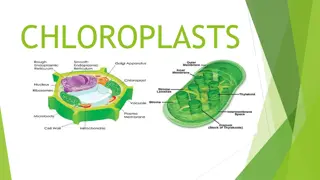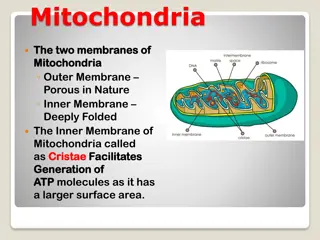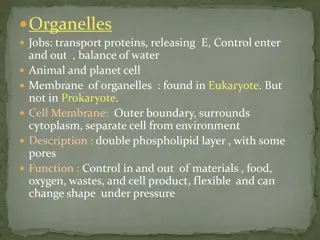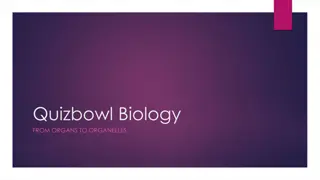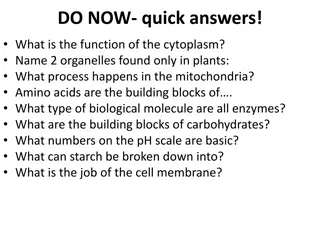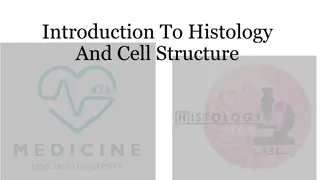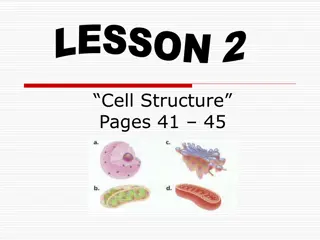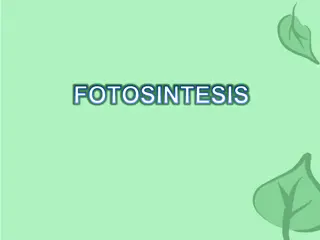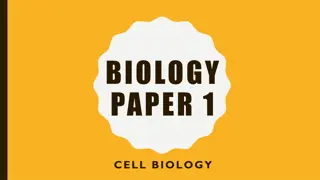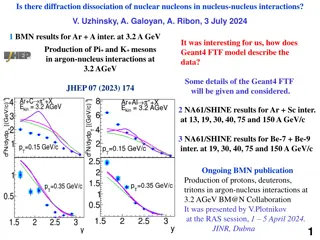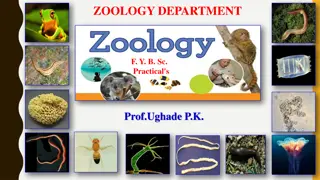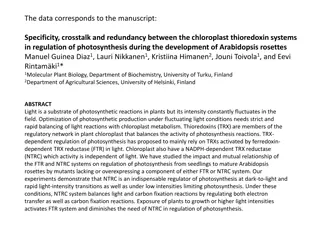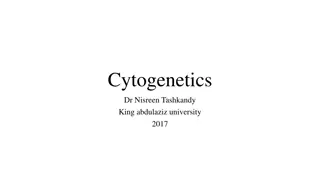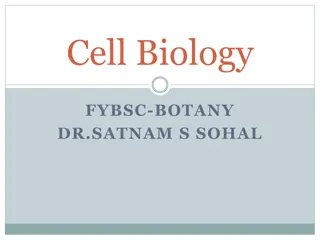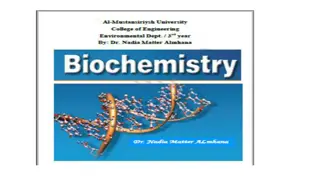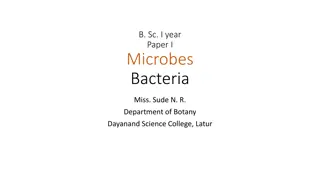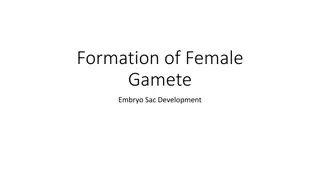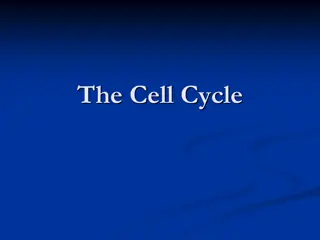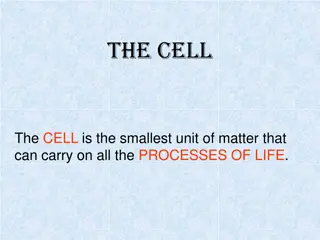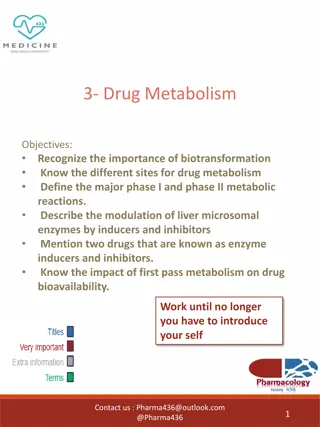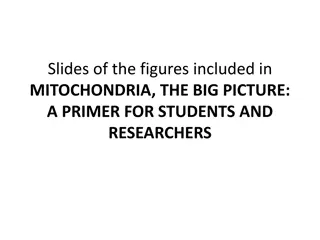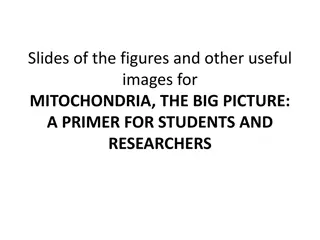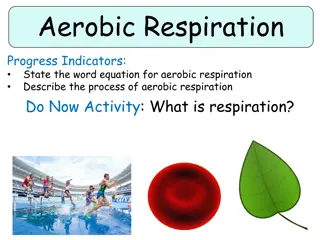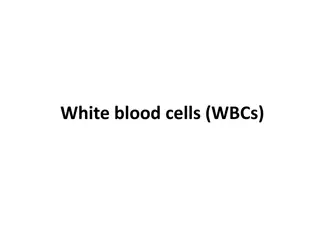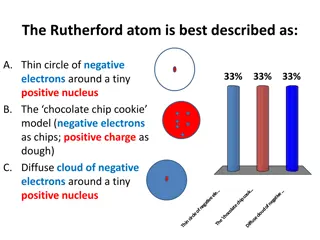Understanding Plant Cell Components: Nucleus, Cell Wall, Mitochondria, Cytoplasm, Chloroplasts
Plant cells consist of various components like the nucleus, cell wall, mitochondria, cytoplasm, and chloroplasts, each serving specific functions essential for the plant's growth and survival. The nucleus houses genetic information, the cell wall provides support, mitochondria produce energy, cytoplasm supports cellular processes, and chloroplasts carry out photosynthesis to generate energy.
Download Presentation

Please find below an Image/Link to download the presentation.
The content on the website is provided AS IS for your information and personal use only. It may not be sold, licensed, or shared on other websites without obtaining consent from the author. Download presentation by click this link. If you encounter any issues during the download, it is possible that the publisher has removed the file from their server.
E N D
Presentation Transcript
Plant Cells Plant Cells, Plants and Identifying Components
Plant Cells The Nucleus The brain of the cell, around 10um in diameter and holds the genetic information required to make the proteins required for new cells DNA contains the information required to build cellular proteins. In eukaryotic cells, the membrane that surrounds the nucleus commonly called the nuclear envelope partitions this DNA from the cell's protein synthesis machinery, which is located in the cytoplasm. Tiny pores in the nuclear envelope, called nuclear pores, then selectively permit certain macromolecules to enter and leave the nucleus including the RNA molecules(smaller) that carry information from a cellular DNA to protein manufacturing centers in the cytoplasm.
Plant Cells The Cell Wall Many kinds of prokaryotes and eukaryotes contain a structure outside the cell membrane called the cell wall. With only a few exceptions, all prokaryotes have thick, rigid cell walls that give them their shape. Cell walls provide support and help cells resist mechanical pressures, but they are not solid, so materials are able to pass through rather easily.
Plant Cells Mitochondria Mitochondrion, membrane-bound organelle found in the cytoplasm of almost all eukaryotic cells (cells with clearly defined nuclei), the primary function of which is to generate large quantities of energy. Mitochondria are typically round to oval in shape and range in size from 0.5 to 10 m. Known as the powerhouses of the cell, mitochondria produce the energy necessary for the cell s survival and functioning. Through a series of chemical reactions, mitochondria break down glucose into an energy molecule known as adenosine triphosphate (ATP), which is used to fuel various other cellular processes. Mitochondria are found in the cells of nearly every eukaryotic organism, including plants and animals. Cells that require a lot of energy, such as muscle cells, can contain hundreds or thousands of mitochondria. A few types of cells, such as red blood cells, lack mitochondria entirely. As prokaryotic organisms, bacteria and archaea do not have mitochondria.
Plant Cells Cytoplasm Cytoplasm consists of all of the contents outside of the nucleus and enclosed within the cell membrane of a cell. It is clear in colour and has a gel-like appearance. Cytoplasm is composed mainly of water but also contains enzymes, salts, organelles, and various organic molecules. The cytoplasm functions to support and suspend organelles and cellular molecules. Many cellular processes also occur in the cytoplasm, such as protein synthesis, the first stage of cellular respiration (known as glycolysis), mitosis, and meiosis. The cytoplasm helps to move materials, such as hormones, around the cell and also dissolves cellular waste.
Plant Cells Chloroplasts Chloroplasts are structures within the cells of plants and green algae that are the site of photosynthesis, the process by which light energy is converted to chemical energy, resulting in the production of oxygen and energy-rich organic compounds. Chloroplasts are present in the cells of all green tissues of plants and algae. Chloroplasts are also found in photosynthetic tissues that do not appear green, such as the brown blades of giant kelp or the red leaves of certain plants. In plants, chloroplasts are concentrated particularly in the internal cell layers of a leaf.
Plant Cells Ribosomes When a cell needs to make proteins, it looks for ribosomes. Ribosomes are the protein builders or the protein synthesizers of the cell. They are like construction guys who connect one amino acid at a time and build long chains. Ribosomes are special because they are found in both prokaryotes and eukaryotes. Ribosomes can join up amino acids at a rate of 200 per minute. Small proteins can therefore be made fairly quickly but two to three hours are needed for larger proteins such as the massive 30,000 amino acid muscle protein titin.
Plant Cells Cell Membrane The plasma membrane, or the cell membrane, provides protection for a cell. It also provides a fixed environment inside the cell, and that membrane has several different functions. One is to transport nutrients into the cell and also to transport toxic substances out of the cell. Outside the cell, in the surrounding water-based environment, are ions, acids, and alkalis that are toxic to the cell, as well as nutrients that the cell must absorb in order to live and grow. The cell membrane, therefore, has two functions: first, to be a barrier keeping the constituents of the cell in and unwanted substances out and, second, to be a gate allowing transport into the cell of essential nutrients and movement from the cell of waste products.
Plant Cells Permanent Vacuole A permanent vacuole is a membrane bound organelle found in plant cells and fungal cells. The vacuole stores water, minerals and some organic molecules useful to the functions of the cell. Left - a root hair cell has a permanent vacuole full of lots of water and minerals collected from the soil. Centre - The fungal cell stores water in its vacuole. Right - The Guard Cell in a Stoma use the water stored in the vacuole to stay rigid.
Plant Transport So now we have seen quite a detailed explanation of a Eukaryotic Plant Cell, you will need to look at these definitions a number of times to understand these functions well. How do plants survive? What do they use as food and where do they store it? Plants make their own food using photosynthesis. The food produced is the sugar called glucose. Food produced by plants is important, not only for the plants themselves, but for other organisms that feed on the plants. Photosynthesis is an endothermic reaction as it requires light energy to react carbon dioxide and water to produce glucose and oxygen. Oxygen is formed as a product. Some is used for respiration. During the day, provided the rate of photosynthesis is high enough, plant and algae give out oxygen. The carbon dioxide required for photosynthesis comes from the air. It enters leaves through the stomata. Water enters the plant through the roots, and is transported to the leaves in the xylem.
Plant Transport Plants don t immediately use all of the sugar they make during photosynthesis, some of it is stored away for use later on, when the plant needs it. A plant can use its glucose stores in a number of ways: Starch is a type of carbohydrate. Its molecules are made up of large numbers of carbon, hydrogen and oxygen atoms. Starch is a white solid at room temperature, and does not dissolve in cold water. Most plants, including rice, potatoes and wheat, store their energy as starch. This explains why these foods and anything made from wheat flour are high in starch.
Plant Transport So plants make food, for themselves and for the manufacture of other plant based things such as cellulose, lipids and amino acids. Like most manufacturing processes, raw materials are needed. Energy comes from the Sun, Carbon Dioxide from the air and water from the ground. Plants require transport systems to move water, dissolved food and other substances around their structures in order to stay alive. The xylem is a tissue which consists of dead cells and transports water and minerals from the roots up the plant stem and into the leaves (ONE WAY). The cells that make up the xylem are adapted to their function They lose their end walls so the xylem forms a continuous, hollow tube. They become strengthened by a substance called lignin. Lignin gives strength and support to the plant. We call lignified cells wood. Transport in the xylem is a physical process. It does not require energy.
Plant Transport So plants make food, for themselves and for the manufacture of other plant based things such as cellulose, lipids and amino acids. Like most manufacturing processes, raw materials are needed. Energy comes from the Sun, Carbon Dioxide from the air and water from the ground. Plants require transport systems to move water, dissolved food and other substances around their structures in order to stay alive. The xylem is a tissue which consists of dead cells and transports water and minerals from the roots up the plant stem and into the leaves (ONE WAY) The phloem moves food substances that the plant has produced by photosynthesis to where they are needed (TWO WAY) for processes such as: growing parts of the plant for immediate use storage organs such as bulbs and tubers developing seeds
Plant Transport We have seen how plants make food, transport it around and store it when necessary. Going back to photosynthesis, plants need carbon dioxide and water as raw materials, making sugar and oxygen as products. Sometimes plants use their sugar to provide energy for their own processes (respiration). This is the reverse of photosynthesis: Plants also transpire which involves the entry, circulation and exit of water through the structure and leaves. Only a small amount of water moving around the plant is used for photosynthesis, a large proportion is lost through the leaves, through the Stoma.
Plant Transport The stomata are small mouth like structures which open and close according to the environmental conditions. The stomata are policed by Guard Cells which stiffen or relax to open or close them, allowing gases and water in and out.
Plant Transport Summary: Plant cells are Eukaryotes with a number of component parts, all of which play a role in the cell s development Plants use Carbon Dioxide and Water to produce Glucose and Oxygen from Photosynthesis Plants use some of the Glucose and Oxygen in Transpiration and to make amino acids and proteins, remaining Glucose is stored as Starch(insoluble) Water and nutrients travel around the plants in Phloem (two way) and Xylem (one way) tube structures. Water follows a transpiration cycle entering the plant through the roots and leaving through the Stomata.
Plant Transport Exercises - True or False?: 1. The cytoplasm in a cell is where Ribosomes produce Proteins by linking together Amino Acids TRUE 2. Transpiration requires Oxygen and Glucose, producing Carbon Dioxide and Water FALSE (Resp) 3. Mitochondria produce energy from Glucose and are known as the Powerhouses of the cell TRUE 4. Photosynthesis is an exothermic reaction (releases heat energy) FALSE (Endo) 5. Plant roots are richly populated with Chloroplasts FALSE 6. Xylem tissue is dead and forms hollow tubes to transport water and minerals one way TRUE 7. Stomata are small mouth like structures, opening and closing to regulate water loss TRUE 8. The Permanent Vacuole is an empty, air filled sac which inflates the cell. FALSE
